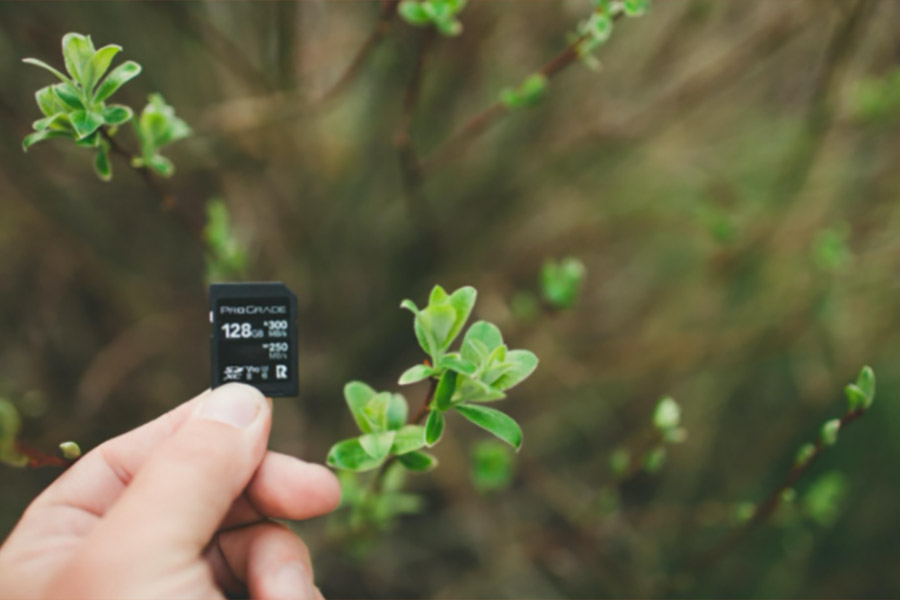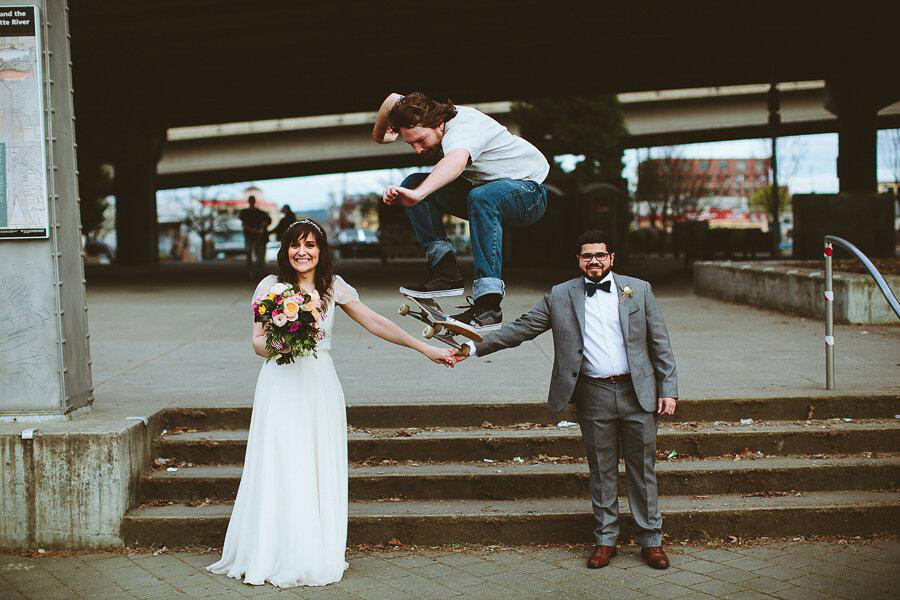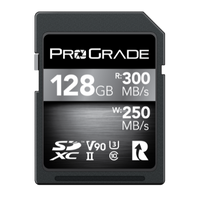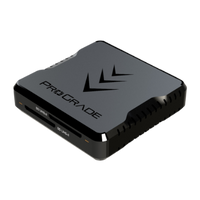After more than 14 years as a professional photographer and photographing over 400 weddings (it might be more than 500 now, honestly I stopped keeping count), I’ve compiled a list of my top ten essentials that any photographer needs to photograph a wedding. Some of the things are really obvious, but there’s some that you might not think of that I’ve found to be crucial from taking literally hundreds of thousands of pictures over the last 14 years of my professional life.
A quick note, these items correlate with my shooting style, I’m a prime lens only, natural light loving photographer. Here’s my top ten list:
10. Speedlight
I’m a natural light photographer through and through, and if I can shoot with natural light, then I will (high ISOs, fast apertures and slow shutter speeds don’t scare me), BUT at the same time, if you’re photographing weddings, you will find yourself in some crazy dark situations, so a speedlight is a must. I’m a Canon shooter so I have a 600ex-rt, a 580ex II and a 430e ex-II. I use these both on and off camera, if you’re looking for budget options for flashes, I’ve heard great things about these, Yongnuo YN600-EX-RT II. My Canon 600ex-rt is powerful enough that I can use a shoot through or bounce umbrella and use it for an off camera light source for family photos as well.
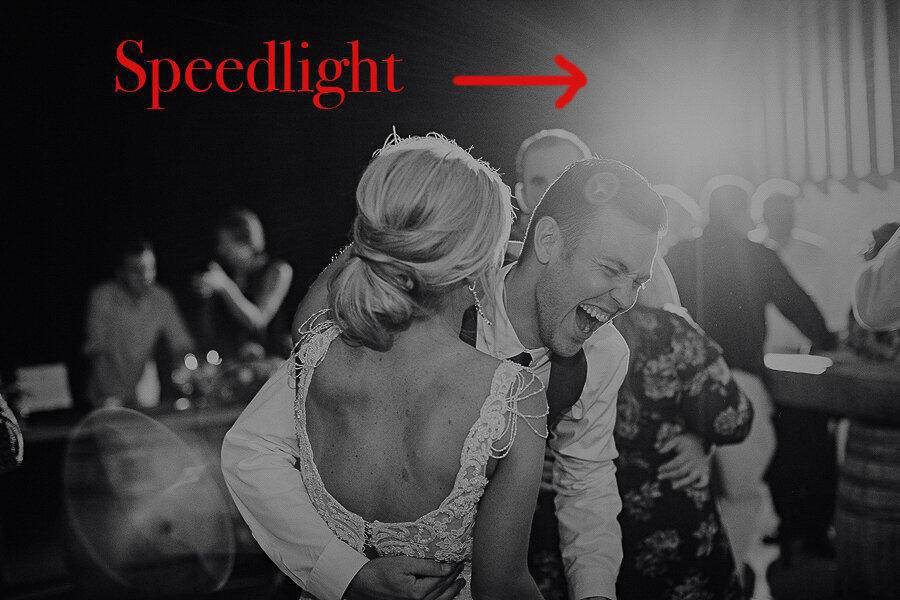
9. Wireless Flash Triggers
Speedlights are powerful little beacons of light, but to get the most out of them, you need to be able to get them off your camera. Moving a speedlight off of your camera gives you unlimited options for lighting angles and directions. I typically keep a flash off-camera on a lightstand during every reception that I can move around easily and fit whatever lighting situation I find myself in. Industry-standard wireless flash triggers are PocketWizards, but they’ve had some unreliable products, and their triggers are also pricey. I use these cheap Yongnuo triggers, and they’ve been incredible, highly reliable (I KNOW my flash is going to fire EVERY TIME), and they’re very affordable too. It should be noted that I do not use ETTL with these triggers, I use them solely as manual triggers (where I’m controlling my flash manually). A side bonus is that when I’m doing professional headshots or on a commercial shoot where I need lights, I use these same triggers to control my Alien Bee 800’s.
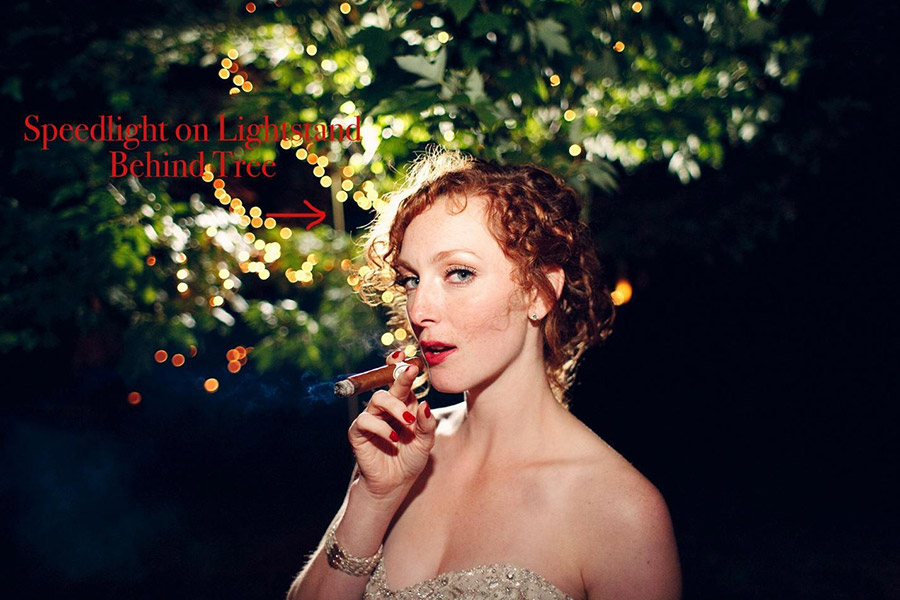
8. Light Stand
Following on the theme of speedlights and using them to their maximum potential, a light stand is an essential piece of equipment for getting your flash off your camera and positioned wherever your heart and artistic vision desire. You can certainly purchase cheap light stands, but I LOVE these Manfrotto stands. If you’re ever walked around with light stands slipping out of your arms and falling onto the ground, you’ll understand why I love the linked Manfrotto stands. Those stands hook together easily so carrying three stands takes up as much space as carrying one cheap stand. Also keep in mind that you might have a $500+ light on top of your stand, so stability matters. If you want to mount your speedlight on any light stand, you’ll need an umbrella adapter, and a cold shoe mount. Quick note, I’ve always heard that you can ruin speedlights by putting them on a metal cold shoe and firing them, I have no idea if that’s actually true, but I’m not risking it; I wrap electrical tape around my metal cold shoes to make sure the flash contacts never touch metal.
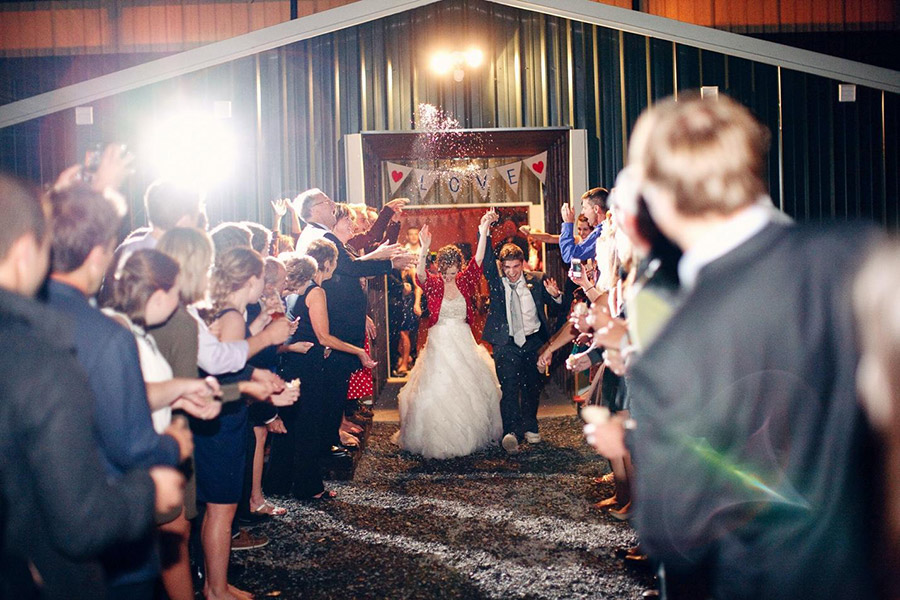
7. Memory Card Case
At first I thought to myself, “is a memory card case really essential?”. But for me, it is. The images that you create at a wedding are everything, without those you’re going to be in big trouble. I’m a big believer in systems, so I create systems for everything I do, including how I manage memory cards with important data on them. When I get done with a shoot I pull my memory cards from my camera and put them into my memory card case that I then put into my pocket. If I go into a store, my memory cards come too. I’ve had camera gear stolen before and insurance covered it, but if the memory cards would’ve been stolen with the clients images on them, it would have been a different story. They no longer make the memory card cases I have, and I really love them, but SD card cases look similar and are affordable.
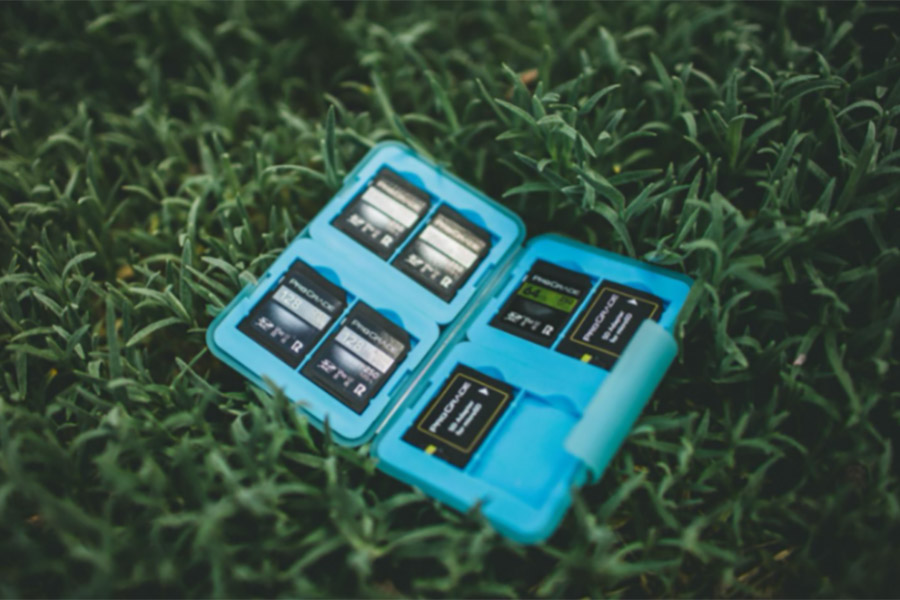
6. Capable Camera Body
The thing about weddings is that if you do enough of them, you are going to find yourself in EVERY POSSIBLE lighting situation. I’ve photographed a wedding on the top of a hill in the Coastal Range of the Oregon Coast where the sun was literally RIGHT BEHIND the couple during the early evening. It was HOT and the sun was BRIGHT, I can’t believe how sweaty I was crouched in the aisle of that ceremony. I’ve also taken photos at a reception in an extremely dark pub in the Netherlands and outdoor receptions in the wilderness after dark (this is actually the darkest, hardest lighting situation, nothing to bounce artificial light off of). All of this to say, you need a camera body that can handle low light and high ISOs really well.
I began my career as a professional photographer in 2006 and went full time in 2009. I started with a Canon 5D, then upgraded to a Canon 5D Mk III, and I’m currently using a Canon EOS-R. Each one of these cameras has been incredibly capable. I make jokes about making out with my cameras, but really, I do love them deeply, because of what they allow me to do. Moving to a mirrorless camera has been really fun, the smaller body is a relief and inspiring to hold for a long period of time, and the function of the EOS-R is outstanding. It’s an incredible camera, and previously I’ve always spent $3500 on camera bodies, so spending a mere $2000 on the EOS R was wonderful.
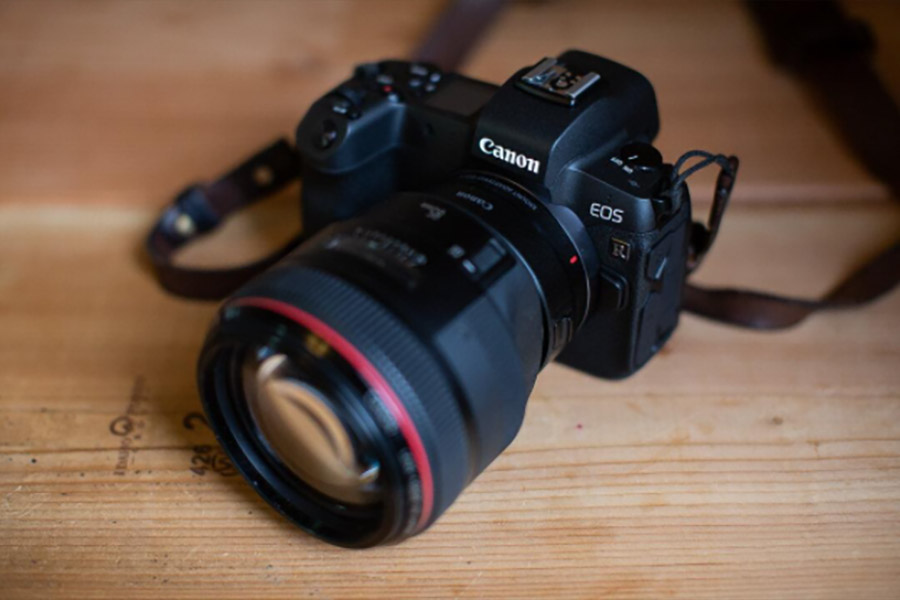
5. Prime Lenses
I’m a prime lens shooter, I sold my last zoom lens in the early 2010s and I’ve never looked back. I became a “professional photographer” with literally no training, I mean zero, I didn’t know what aperture was and I still to this day have never taken a photography class. The question I asked myself from the beginning of my career has been, “how can I make my work better than Uncle Bob.” If you’ve shot many weddings, you know Uncle Bob, and you know he may even have the same, or worse, nicer gear than you. I’ve always loved the shallow depth of field look and prime lenses give me the opportunity to use super fast apertures. Even though Uncle Bob might have a 70-200F2.8L, he doesn’t ever have a Canon 85mm F1.2L. It also takes skill to shoot moving subjects at F2 or F1.2, and Uncle Bob hasn’t put in the time to learn that. These are the lenses that I keep in my quiver: Canon 24mm F1.4L, Canon 35mm F1.4L, Canon 50mm 1.2L, Canon 85mm 1.2L and the Canon 135mm F2L. I would like a longer lens, so I’m considering a Canon 200mm F2L or a Canon 70-200mm 2.8L; one of these will be my next buy.
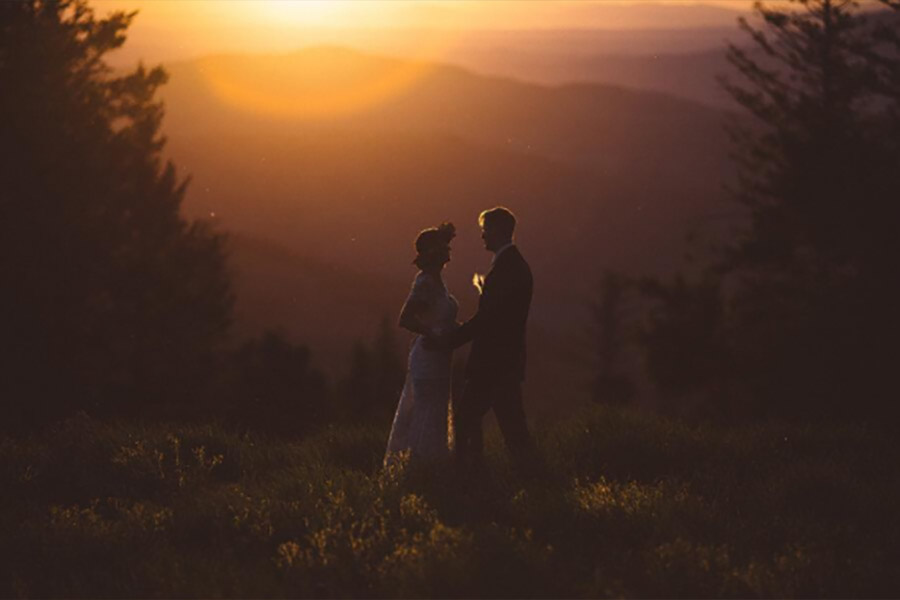
4. A Comfortable Camera Strap
Spend eight plus hours with a heavy camera and lens hanging from your neck, and you’ll understand why a comfortable strap is on my essential wedding photography gear list. For weddings, my favorite strap is the Holdfast MoneyMaker Solo. It’s the most comfortable strap I’ve found and my neck is the least sore at the end of a long day. People also always comment on what a beautiful strap it is. For commercial work I use the Peak Design Slide Lite Strap, which I also love, but I’d still take the MoneyMaker Solo for weddings any day.
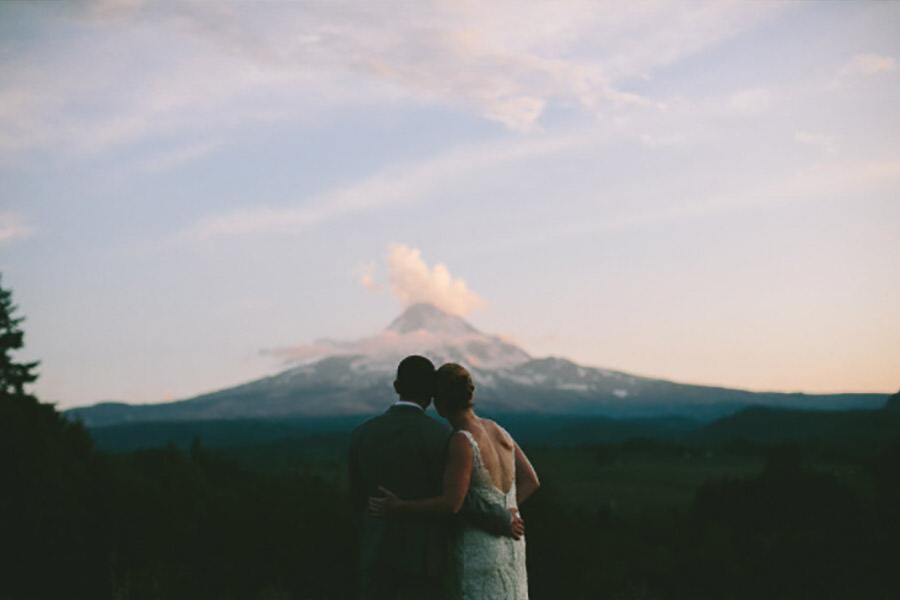
3. Lens Bag
Since I shoot prime lenses exclusively, I change lenses A LOT – like 50-100 times per shoot I’d guess. I need my lenses on my hip and I haven’t found any better bag than the Shootsac. It’s expensive for sure, but I’ve used mine for the better part of a decade (I even wore a hole in the back) and I absolutely love it. It’s also great for holding snacks, your memory card case, and extra batteries.
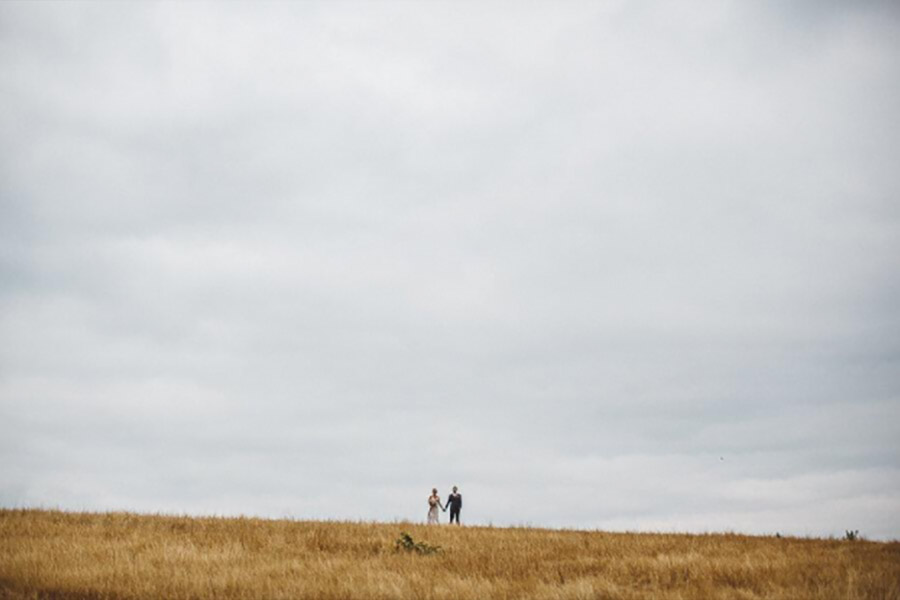
2. Backup Gear
It’s easy to see wedding photography as a low investment, high return opportunity, but if you’re thinking that, you’re probably not realizing that you need backups of all your gear. If ANY piece of equipment fails, you must be able to replace it and carry on shooting at a moment’s notice and produce the same high quality imagery you’ve promised your clients. Cameras are extremely reliable, but you never know when something will break! I take great care of my gear, but things still break from time to time, and I tend to especially break shutter buttons.
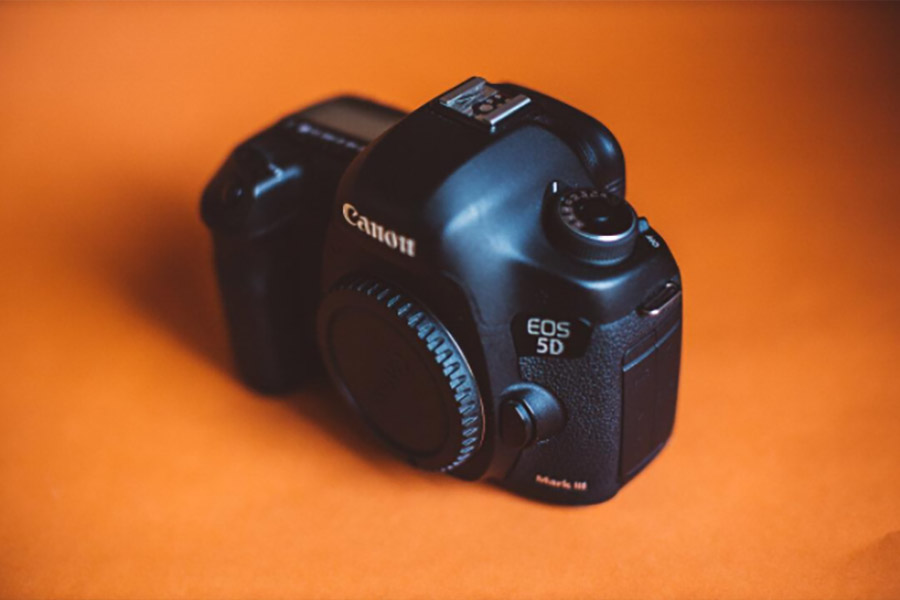
1. Reliable Memory Cards
If you’re photographing weddings, your images are your product. Like I said, I’ve had gear stolen, but it doesn’t matter, what matters is that I’ve never lost a single image from a shoot. I recently changed memory card companies when I switched to the EOS R and it was because I wanted to find the most reliable memory card company, and I landed on ProGrade Digital SD Cards. If you’re just shooting stills, you don’t need super fast cards (although it’s still nice), but if you’re shooting video you NEED fast memory cards to be able to shoot in 4k. These are the memory cards that I’m currently using and they’re not only extremely fast, but have had perfect reliability. I feel confident relying on these little pieces of plastic and metal from ProGrade Digital to hold and protect my images until I get them home and loaded onto my external hard drive.
Streamline your workflow and browse the entire collection of memory cards and memory card readers from ProGrade Digital.
